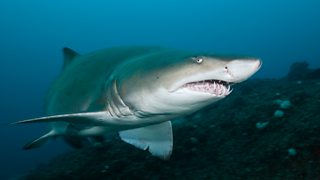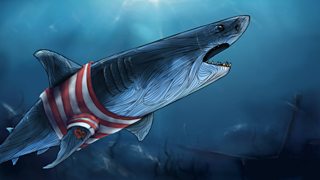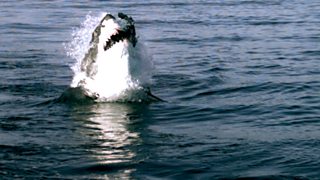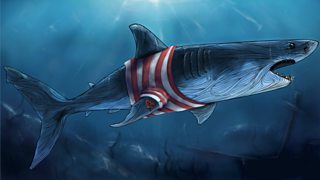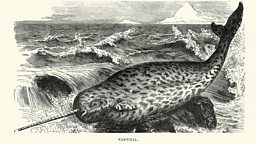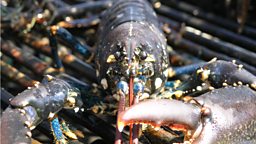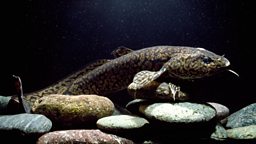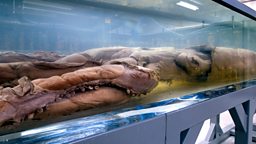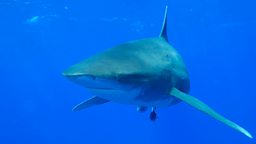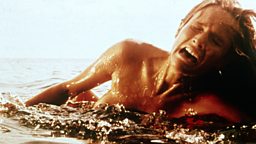What made Jaws such an effective thriller?
1975. Loon pants, Harold Wilson, strikes... and Jaws. The film that made 'durr dun... durr dun...' one of the most terrifying musical phrases and established the image of a fin as one that would recur whenever we swam out of our depths.
Forty years after the film's release, we talked to Professor John Ó Maoilearca of the University of Kingston about what it was that made Jaws such an effective thriller.
1. A formula for fear
The enemy you cannot see - something intent on devouring you in an element you are unfamiliar with, whether in sea or space - is a long held fear. In fact the film Alien was pitched as 'Jaws in space'.
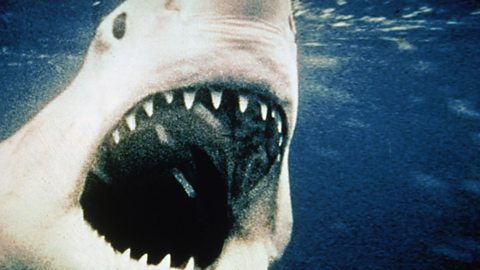
Why was Jaws such a scary film?
Professor John Ó Maoilearca on the 'very effective' movie formula used in Jaws and Alien.
2. Realism
This wasn’t a 24m radioactive ant. This was suspense created around a real creature - a great white shark of not unreasonable proportions. The fact that it was filmed in the ocean rather than a tank added to the naturalism, although the slight rubberiness of Jaws when we finally saw him was questionable. But by then we were invested in the suspense.
3. A new way of dying
Before Jaws, sharks been used as sleek elements of danger in film. James Bond would dangle above them while his arch enemy helpfully explained the plot. After June 1975, death by shark attack was a possibility we could all fear. You could be swimming in Florida and be in the same ocean as Jaws.
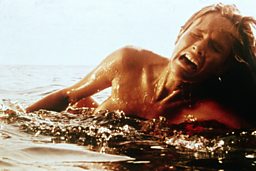
4. Durr dun… durr dun…
John Williams' score became as much a character in the film as the shark. The pulsing chords mimic the accelerated heartbeats of those watching Jaws' approach and the muscular writhing and jabbing of the creature in the water. The sinister, simple phrasing has become an iconic musical signature.
5. All killer, no filler
Jaws is a tightly constructed movie, concentrating on one enemy. There is no romantic subplot, no extraneous character battles, no hordes of baddies to dispose of before the battle with the Big One – just a small boat, three blokes and a huge ocean.
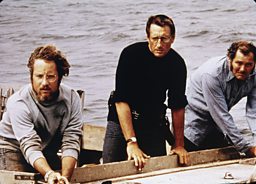
6. It’s all in the eyes
Sharks have expressionless, mask-like faces. A mask-like visage is a well used trope in horror (Hannibal Lecter, Jason in Friday 13th, Alien) as it reinforces our vulnerability. We are faced with something intent on hurting us in ways we are unable to predict as we cannot read its face.
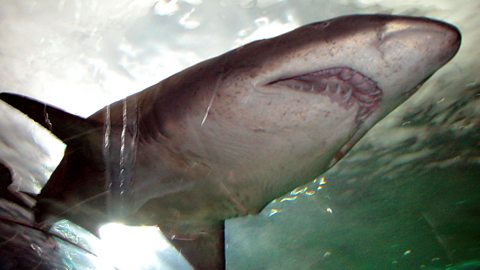
Why are sharks so hard to like?
Naturalist Richard Kerridge says sharks' expressionless faces make them hard to like.
7. A masterclass in suspense
The mechanical shark did not cope well with salt water, so director Steven Spielberg had to create ways of suggesting the shark’s presence rather than provide an overt reveal. Slight movements you’re not sure you saw, endless scanning over oceans, close-ups of hapless swimmers legs seen from the shark’s perspective had cinemagoers on the edge of their seats and sometimes under them. Have a look at this beach scene analysis to see how he did it:
8. Plausible dialogue
The film had a well-written script. Delays with the mechanical shark alllowed time to rework and create naturalistic dialogue, so unlike many horror films, we invest in the action all the way through rather than sitting through B movie chatter until the exciting moments come along.

Jaws broke ground showing 'shark's point of view'
Jaws scriptwriter Carl Gottlieb 40 years after the film was screened.
9. A young audience
Jaws was given a PG certificate. It’s unlikely it would receive the same certificate now, given the gory nature of the opening scenes. So it hit a young audience who carried the fear with them through their movie-going lives.
10. Out of our element
When we look into water we see our own faces staring back at us. We know there is life down there, but it’s thriving in an environment that is alien to us. And possibly plotting our destruction.
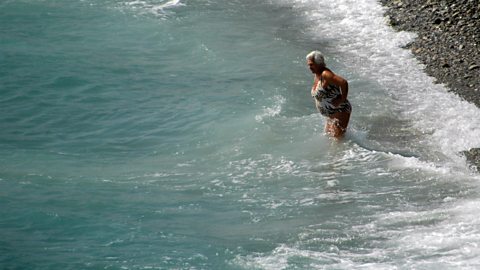
'The ocean is an alien place'
Richard Kerridge says our vulnerability in the sea enhanced the fear factor of Jaws.
Sharks
-
![]()
From sunbathing to cannibalism, 10 things worth knowing about sharks.
-
![]()
The Nineties. Blur, Damien Hirst, the Groucho… and the world’s most famous shark... It was ART, man.
-
![]()
Professor John Ó Maoilearca on the negative impact of Jaws on sharks and our perception of them.
-
![]()
Brett Westwood examines our fear and fascination with sharks in cultures around the world.
Monkeys and Apes
-
![]()
Test your knowledge of monkeys and apes in the movies.
-
![]()
Mr A. Mandrill has had enough. He's trying to sue the entire human race.
-
![]()
Charlotte Uhlenbroek on primate variety and the difference between monkeys and apes.
-
![]()
Charlotte Uhlenbroek believes we have much to learn from our charismatic cousins.
